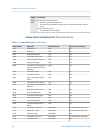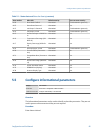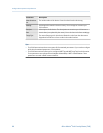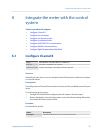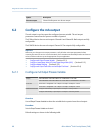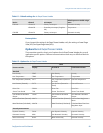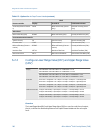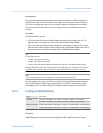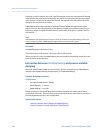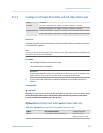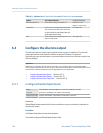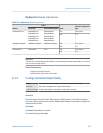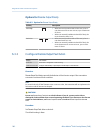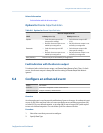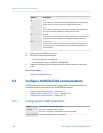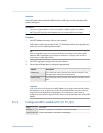
Damping is used to smooth out small, rapid fluctuations in process measurement. Damping
Value specifies the time period (in seconds) over which the transmitter will spread changes
in the process variable. At the end of the interval, the internal value will reflect 63% of the
change in the actual measured value.
Added Damping affects the reporting of mA Output Process Variable through the mA output
only. It does not affect the reporting of that process variable via any other method (e.g., a
frequency output or digital communications), or the value of the process variable used in
calculations.
Note
Added Damping is not applied if the mA output is fixed (for example, during loop testing) or if the mA
output is reporting a fault. Added Damping is applied while sensor simulation is active.
Procedure
Set Added Damping to the desired value.
The default value is 0.0 seconds. The range is 0.0 to 440 seconds.
When you specify a value for Added Damping, the transmitter automatically rounds the value
down to the nearest valid value.
Interaction between mA Output Damping and process variable
damping
When mA Output Process Variable is set to viscosity, density, or temperature, Added Damping
interacts with Viscosity Damping, Density Damping, or Temperature Damping.
Example: Damping interaction
Configuration:
• mA Output Process Variable = Density
• Density Damping = 1 second
• Added Damping = 2 seconds
Result: A change in density will be reflected in the mA output over a time period that is
greater than 3 seconds. The exact time period is calculated by the transmitter according to
internal algorithms which are not configurable.
Related information
Interaction between Density Damping and Added Damping
Interaction between Viscosity Damping and Added Damping
Integrate the meter with the control system
102 Micro Motion
®
Fork Viscosity Meters (FVM)



